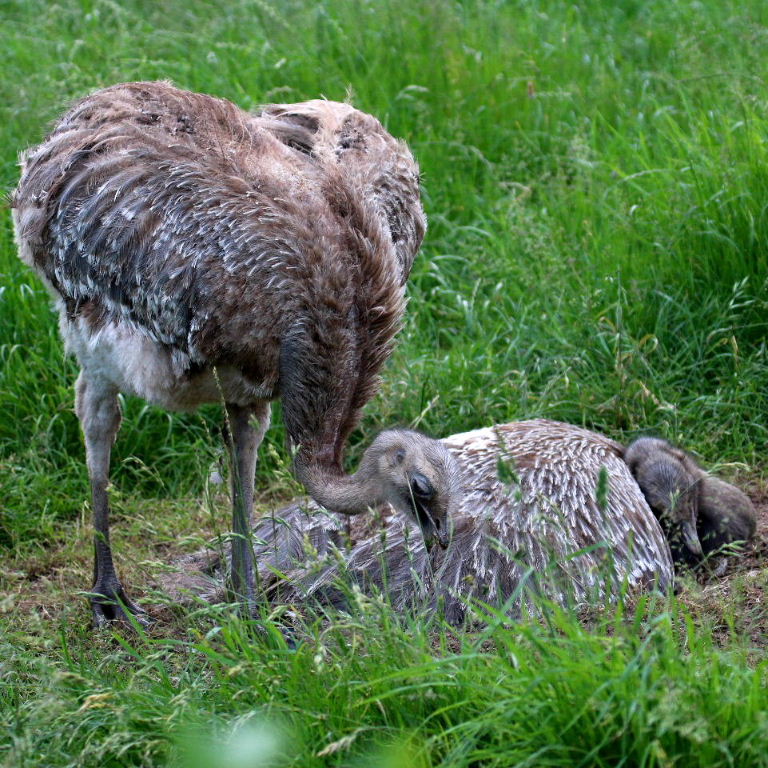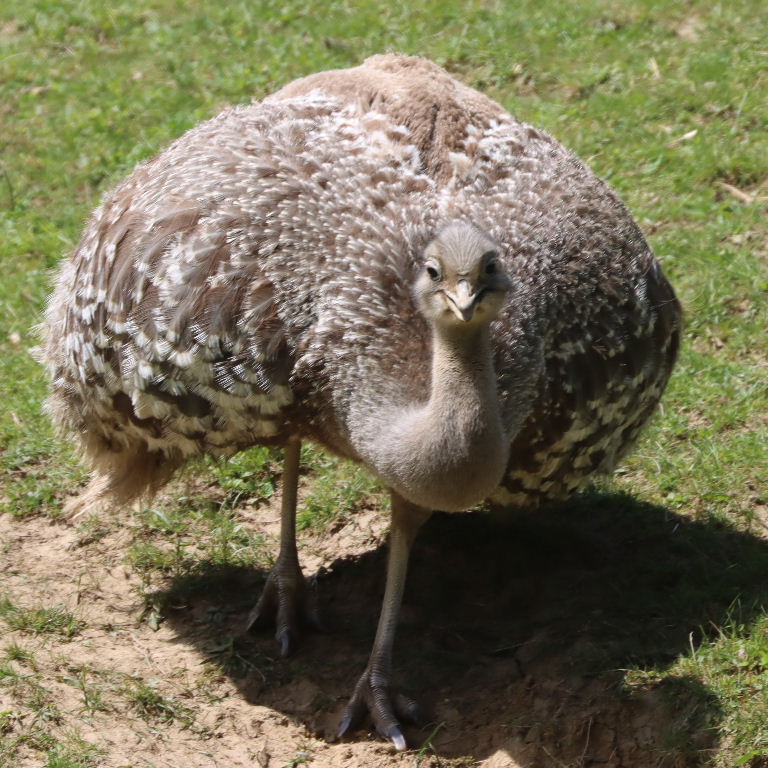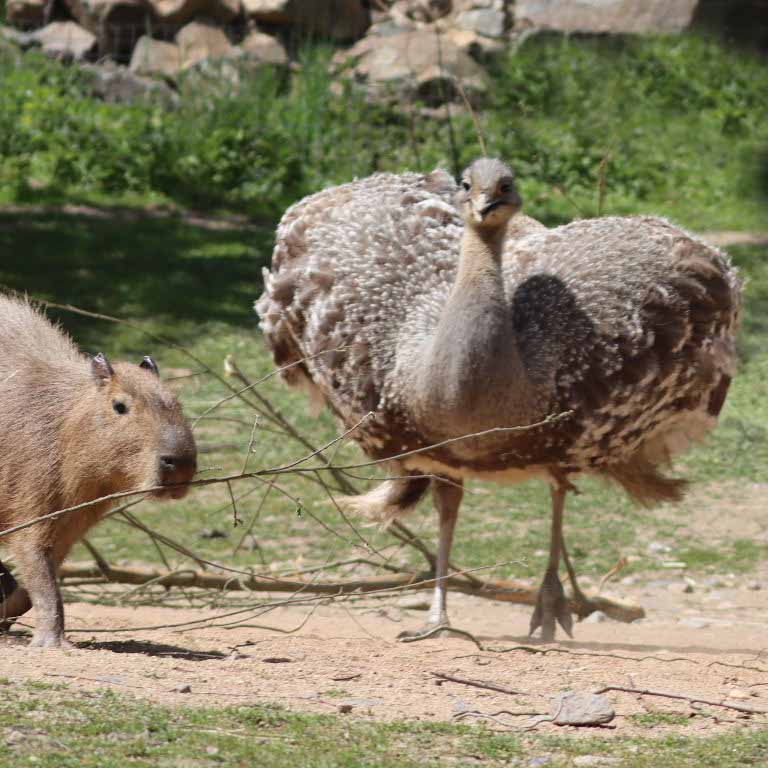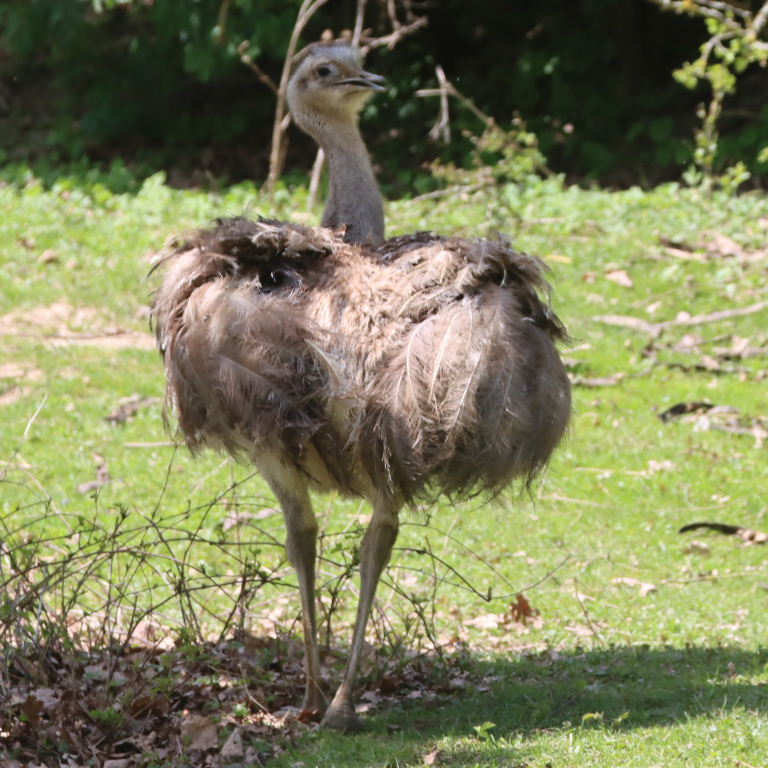Darwin's/Lesser Rhea Rhea pennata (prev. Rhea darwinii/Pterocnemia pennata)


Darwin's Rhea, also called the Lesser Rhea, is a little browner and smaller than its better-known Greater cousin
and has white-tipped feathers.



The nominal subspecies shown above is native to Patagonia (southern Argentina and Chile);
1-2 other subspecies is/are native to the Andean Plateau (north Chile/Bolivia).


 Chasing Capybara
Chasing Capybara
Like Greater Rheas, they are flightless but use their wings for fast change of direction when running at up to 60 km/h.



Rear of the Rhea: "Does my lesser rear look big in this?"
 Vicuna friends
Vicuna friends


Like the Greater Rhea, the males incubate and raise the young of multiple mates.



His nest is a scrape in the ground where females might lay up to 50 eggs for him to defend and incubate (typically far fewer);
he will raise the young alone while the females will go off to mate and lay elsewhere.
(Ironically the bird is named after the Greek Titan Rhea who was mother of the Olympian gods, possibly since it was thought the bird
diligently caring for so many chicks was a female.)


